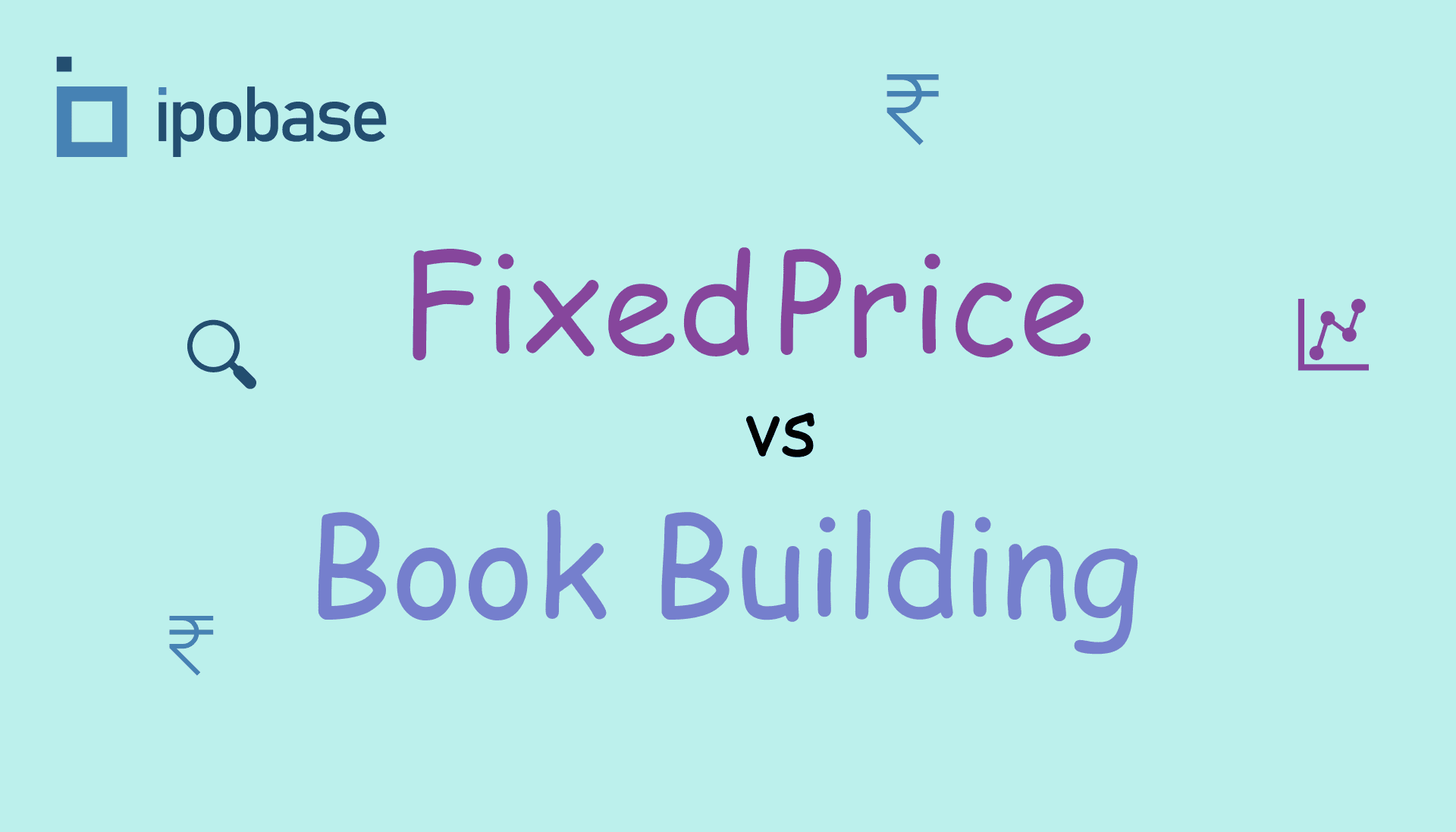Understanding IPO Types - Fixed Price vs Book Building
Confused about IPO pricing? There are two main methods: fixed price and book building. Fixed price offers upfront transparency but might miss out on gains. Book building allows bidding within your budget but has uncertainty about the final price.

IPO stands for Initial Public Offering. It's the process when a private company decides to sell its shares to the public for the first time. This lets the company raise capital and become a publicly traded company on a stock exchange. Let’s explore the two common types of IPOs:
Fixed price IPO
A fixed price IPO, also known as a fixed price offering, is a method companies use to go public where the company sets a predetermined price for its shares before the IPO opens for investment This price is established after the company, along with its advisors, considers factors like financial health, future prospects, and overall valuation.
Here's a breakdown of how it works:
- Price Discovery Upfront: Unlike book building IPOs, the price isn't determined by investor bids. The company decides the price investors will pay.
- Investor Bids: Investors place bids for shares at the pre-determined price.
- Allocation: Once the IPO closes, share allotments are decided based on demand. If demand is high, you might not receive all the shares you requested.
Book building IPO
Book building is a method used to determine the price of shares in an Initial Public Offering (IPO). It's essentially a price discovery process involving investment banks acting as underwriters for the IPO. Here's a breakdown of the process:
- The underwriter sets a price band: This is a range within which investors are expected to submit bids for the shares.
- Investors submit bids: Institutional investors, like fund managers, express their interest in buying the shares by specifying the quantity of shares they want and the price they're willing to pay (within the price band).
- Building the book: The underwriter gathers and analyzes these bids to understand investor demand for the shares. This information is compiled into a book.
- Price determination: Based on the bids in the book, the underwriter determines a final cut-off price. This is the price at which the shares will be offered to the public. The cut-off price is usually set around a price point where there's strong investor demand.
Book building helps ensure that the IPO is priced fairly, reflecting actual investor interest rather than just an arbitrary price set by the company.
Conclusion
In conclusion, the choice between a fixed price IPO and a book building IPO depends on the company's priorities and risk tolerance.
Fixed price IPOs offer a simpler process and can appeal to retail investors. However, the company takes on the risk of setting the right price upfront. Book building IPOs are more common and leverage investor demand to determine a market-driven price. This can lead to a fairer price and potentially higher proceeds for the company. However, the process is more complex and the final price can be volatile.
Ultimately, both methods have their pros and cons. The best approach depends on the specific circumstances of the IPO and the company's goals.